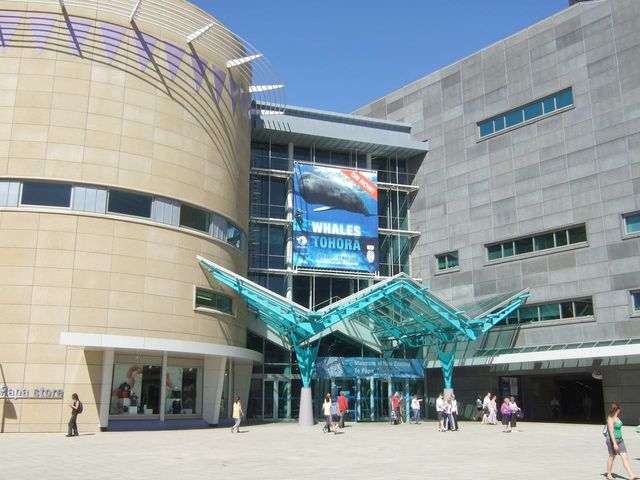
Te Papa Tongarewa
Wellington, New Zealand
The Museum of New Zealand Te Papa Tongarewa is New Zealand's national museum, located in Wellington. Known as Te Papa, or "Our Place", it opened in 1998 after the merging of the National Museum and the National Art Gallery. More than 1.5 million people visit every year.
Te Papa Tongarewa translates literally to "container of treasures". A fuller interpretation is ‘our container of treasured things and people that spring from mother earth here in New Zealand’. Te Papa's philosophy emphasises the living face behind its cultural treasures, many of which retain deep ancestral links to the indigenous Māori people. The Museum recognises the partnership that was created by the signing of the Treaty of Waitangi, te Tiriti o Waitangi, in 1840.
The five main collections areas are Arts, History, Taonga Māori, Pacific Cultures, and Natural History.
The History Collection includes many dresses and textiles, the oldest of which date back to the sixteenth century. The History Collection also includes the New Zealand Post Archive with around 20,000 stamps and related objects, and the Pacific Collection with about 13,000 historic and contemporary items from the Pacific Islands.
There are significant collections of fossils and archaeozoology; a herbarium (WELT) of about 250,000 dried specimen; a collection of about 70,000 specimen of New Zealand birds; significant amphibians, reptiles and mammals.
The museum has the world's largest specimen of the rare colossal squid (Mesonychoteuthis hamiltoni). It weighs 495 kilograms (1,091 lb) and is 4.2 metres (14 ft) long. The squid arrived at the museum in March 2007 after being captured by New Zealand fisherman in the Ross Sea off Antarctica.
The cultural collections include collections on photography, Māori taonga (cultural treasures), and Pacific cultures.